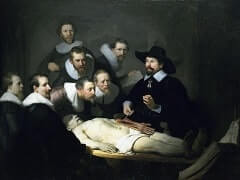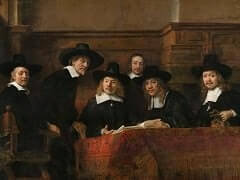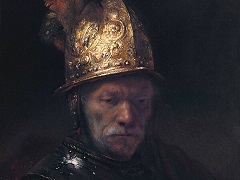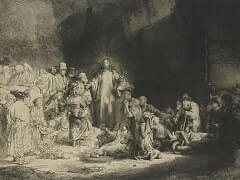The Good Samaritan, 1633 by Rembrandt
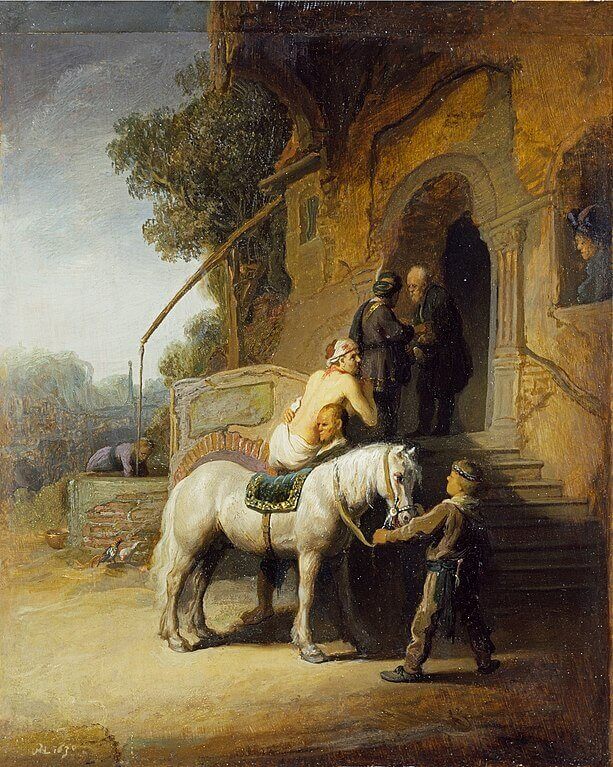
Some fifty of Rembrandt's works in all media feature figures at the entrance to a house or at a window, poised between inside and out. Admittedly, this motif is a common feature of Dutch art in the genre paintings of Adriaen van Ostade and the courtyard scenes of Johannes Vermeer, but they seldom occur in the art of Rembrandt's predecessors, his teacher Lastman or the Dutch followers of Caravaggio. After Rembrandt, however, they are repeatedly encountered in the religious and genre paintings of artists of his school, and in his his own art they may be seen as a veritable trademark, liberally introduced to serve a variety of functions, from the purely aesthetic to the tellingly dramatic.
The Good Samaritan depicts the final scene in the parable of the Good Samaritan (Luke 10:25-37) in which the Samaritan stopped to help a traveler who had been attacked by robbers. In this painting which shows a Samaritan wounded man being carried to the entrance of an inn where he will be tended, Rembrandt defines the key roles that the doorway was to play in his art, either between two states of the drama or two different states of existence. Viewed in this way, the doorway may be seen as the visual equivalent of a new chapter heading.

Rembrandt use doorway in his art to mark a turning point in the story.





